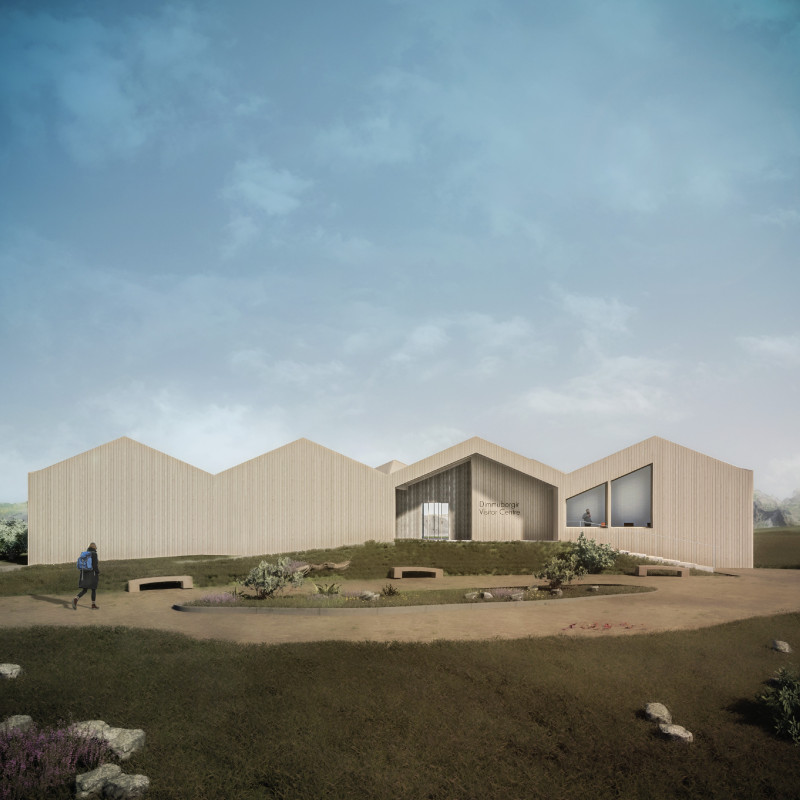5 key facts about this project
The Porta Visitor Centre is located in the Dimmuborgir Lava Fields of Iceland, a site known for its rugged volcanic landscape. The centre functions as a hub for visitors, providing information and context about the area. Its design concept emphasizes a connection between the building and nature, characterized by smooth, flowing forms that reflect the terrain's natural contours.
Roof Design
The roof features interlocking gables, a design choice that draws inspiration from the local volcanic rock formations. This element ties the building to its geographic context, blending the architecture with the surrounding geology. The gabled shape not only serves an aesthetic purpose but also highlights the relationship between the structure and the natural environment.
Entrance Experience
The entrance is designed as a recessed space that welcomes visitors while creating a transition from the outside world to the interior. This architectural feature fosters a sense of expectation, inviting people into a different experience. By thoughtfully separating the outside landscape from the inside environment, the design encourages users to appreciate both spaces as interconnected.
Material Selection
The building primarily employs glued laminated timber, chosen for its environmental benefits and structural properties. This material helps to minimize the building's carbon footprint, aligning with sustainable design practices. Additionally, locally sourced timber is used for cladding, which reduces transportation emissions and supports local industries. The selected materials contribute to a building that feels integrated with its environment.
The interior layout encourages movement and exploration, guiding visitors through spaces that engage with the beautiful surroundings. Large windows and defined pathways connect the inside with the outdoor vistas. Natural light fills the interiors, enhancing the experience and allowing visitors to appreciate the views of the lava fields from within the centre.






















































